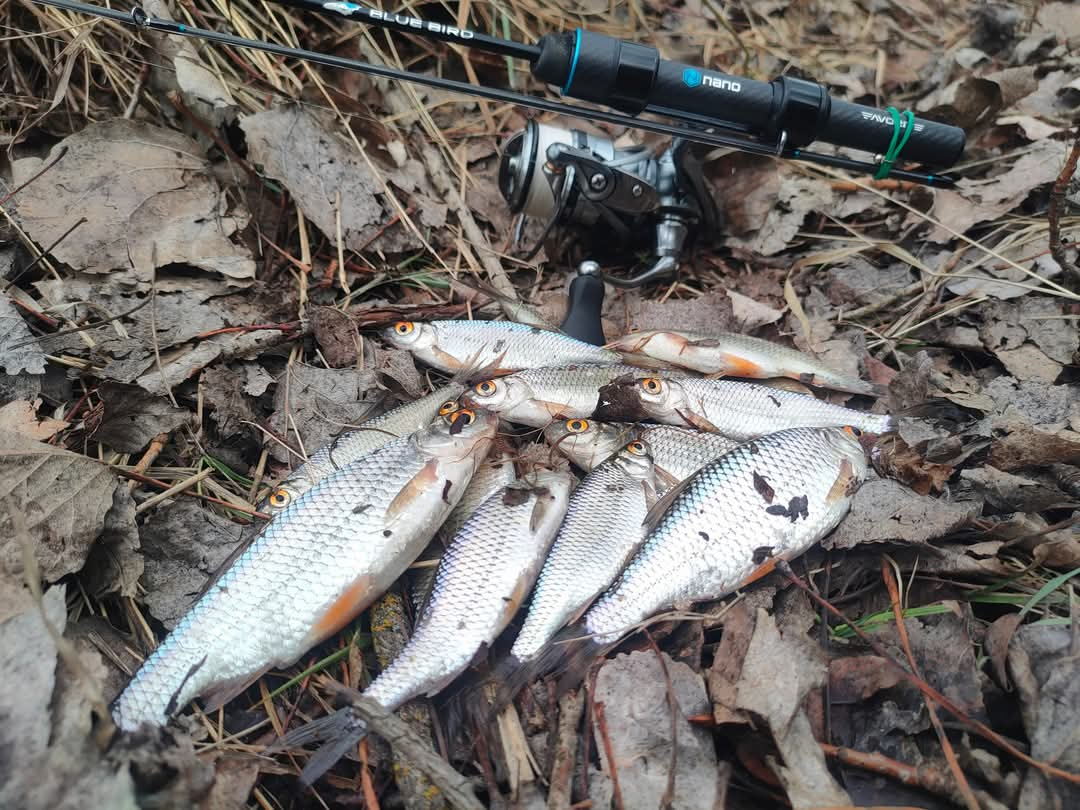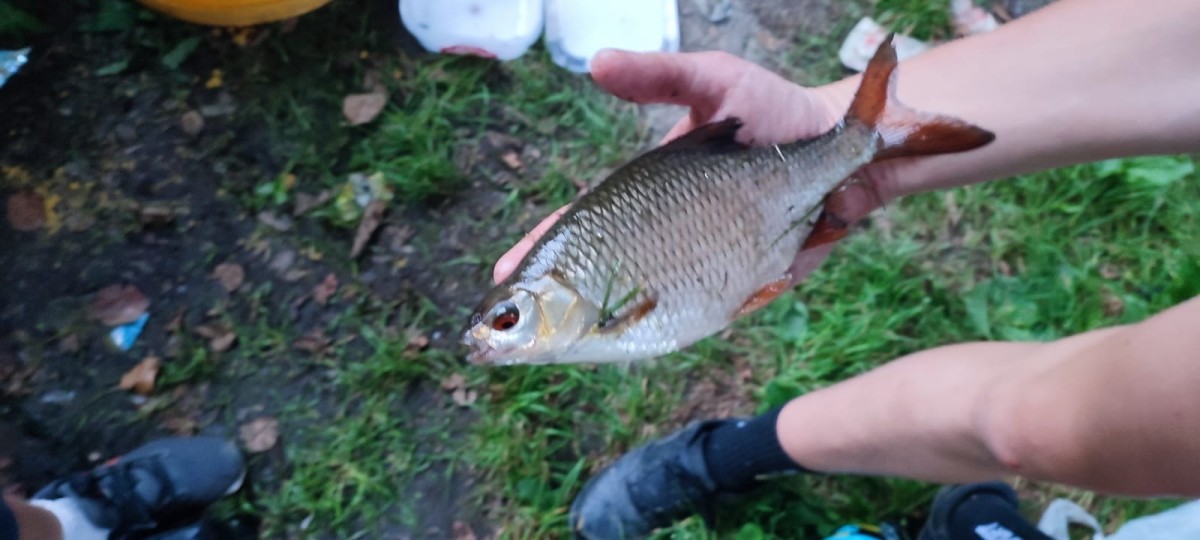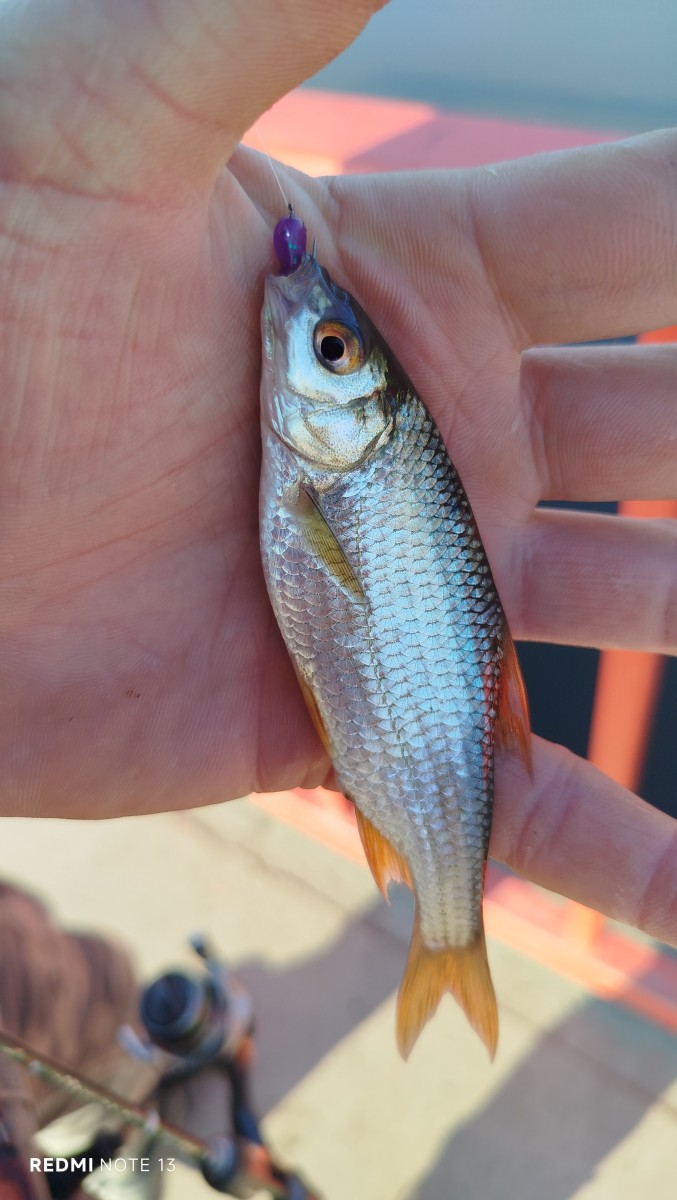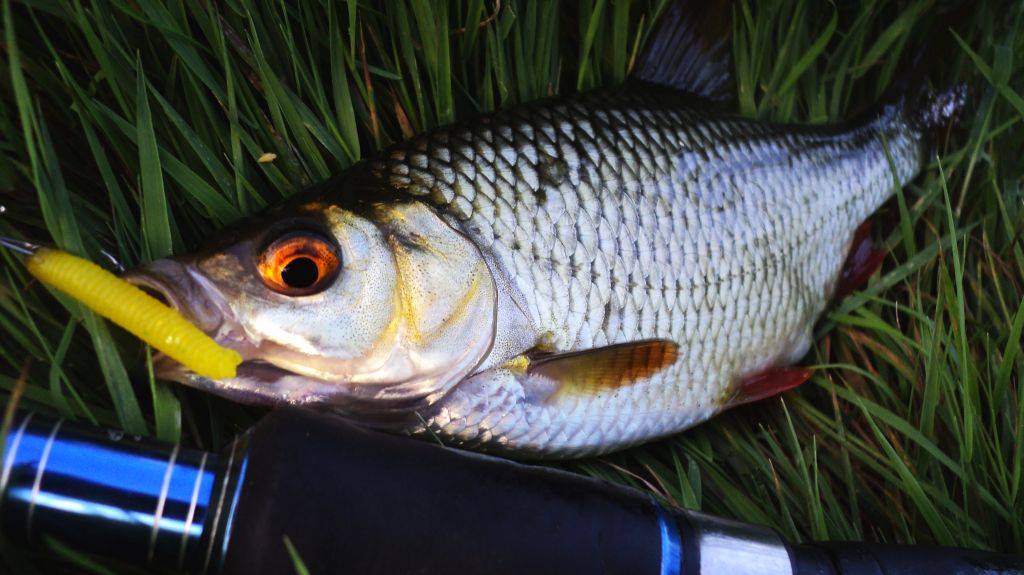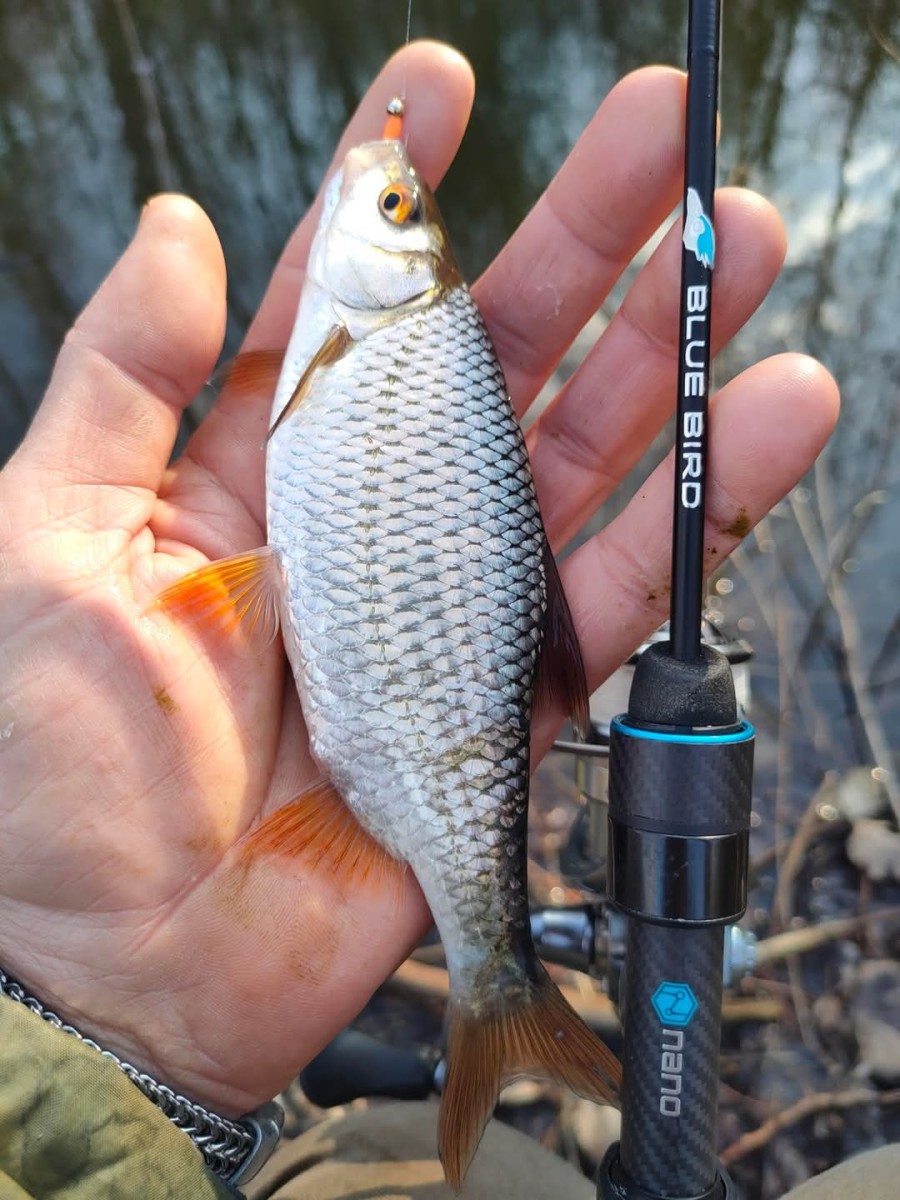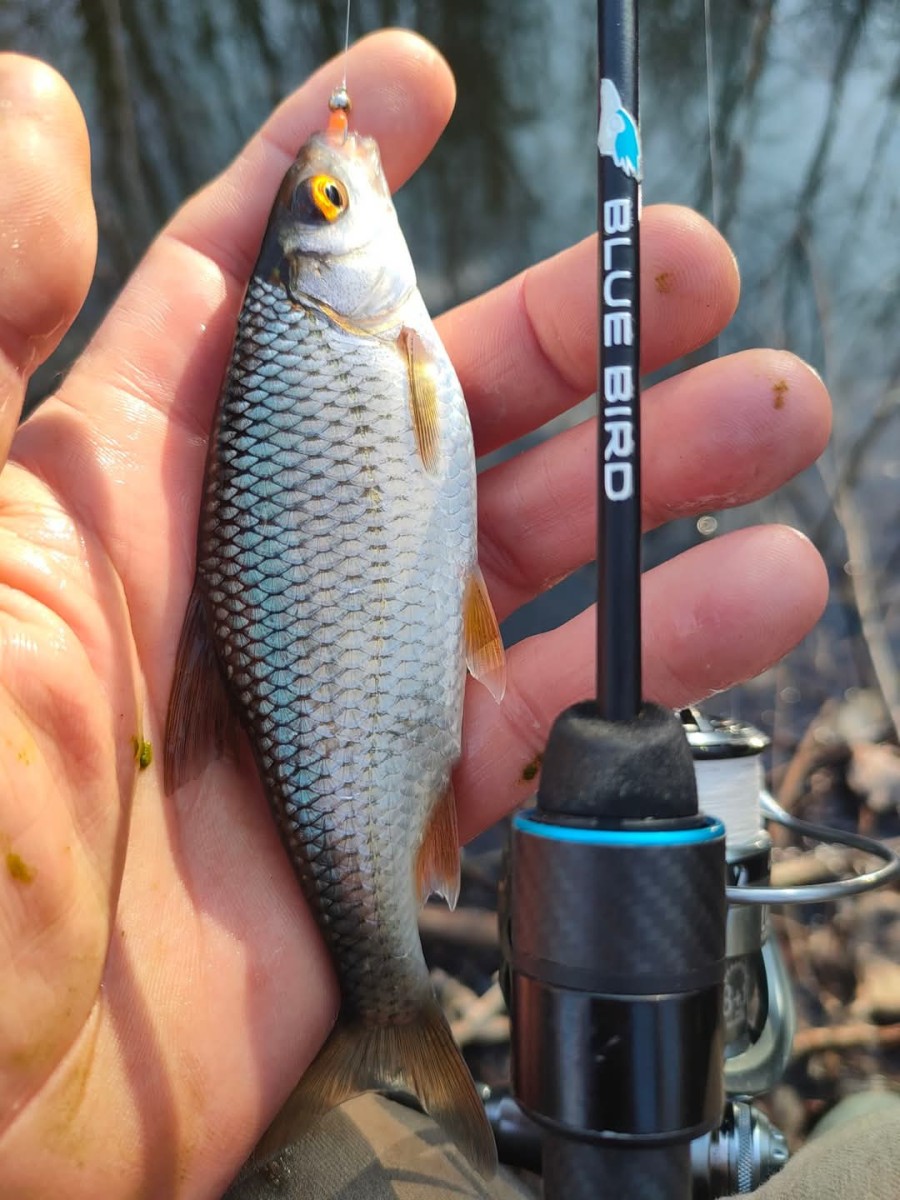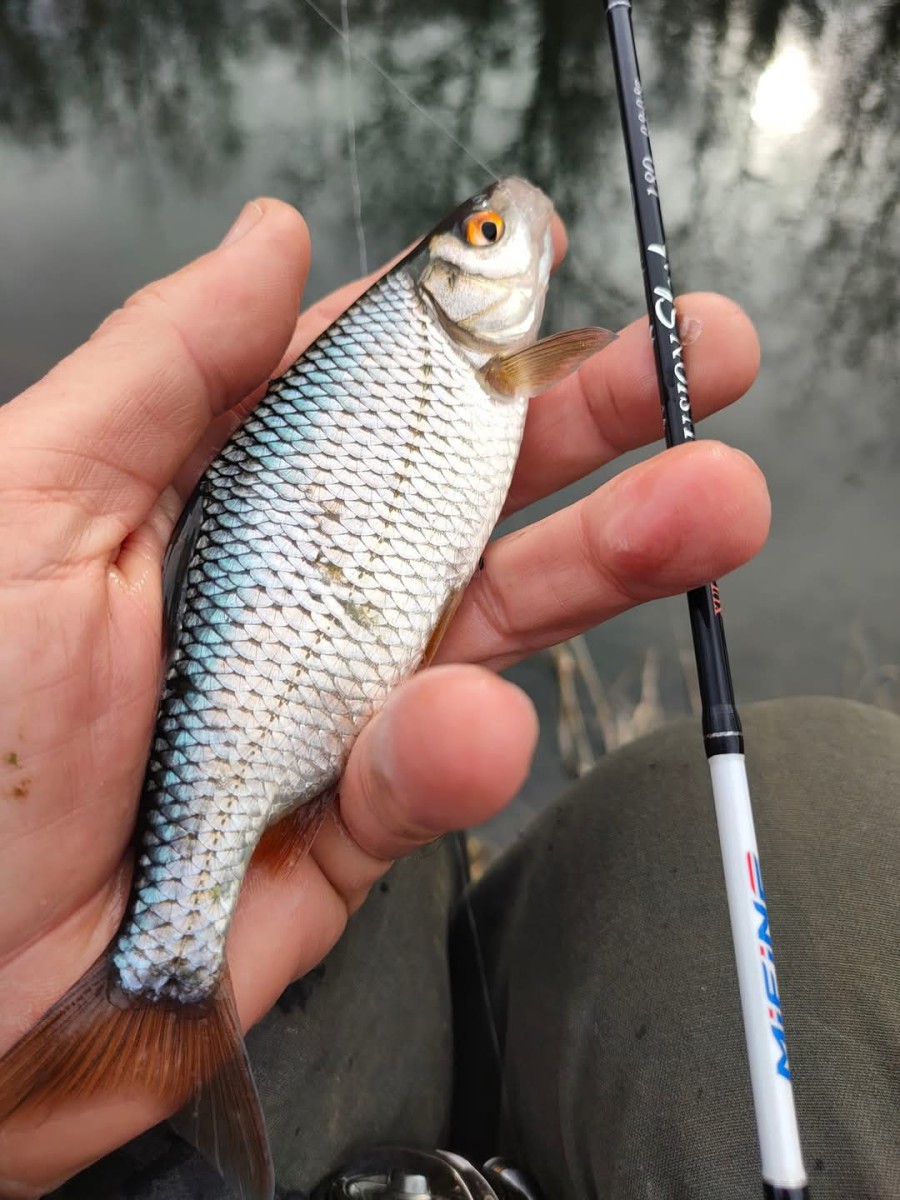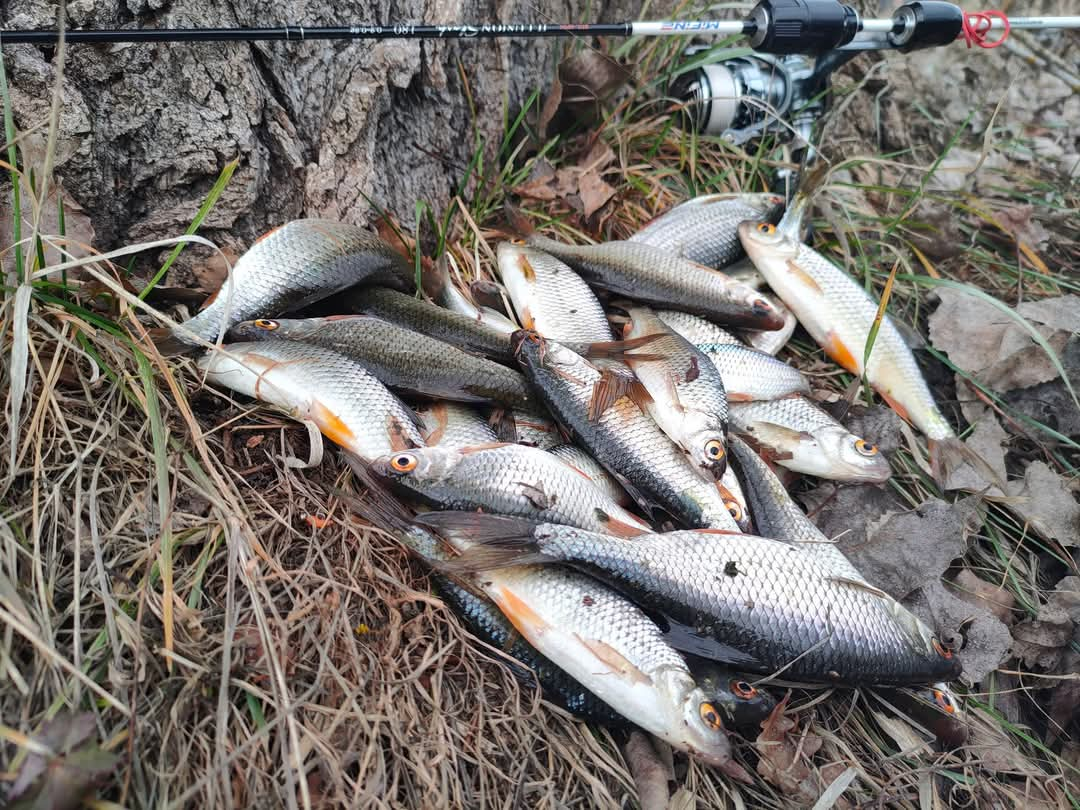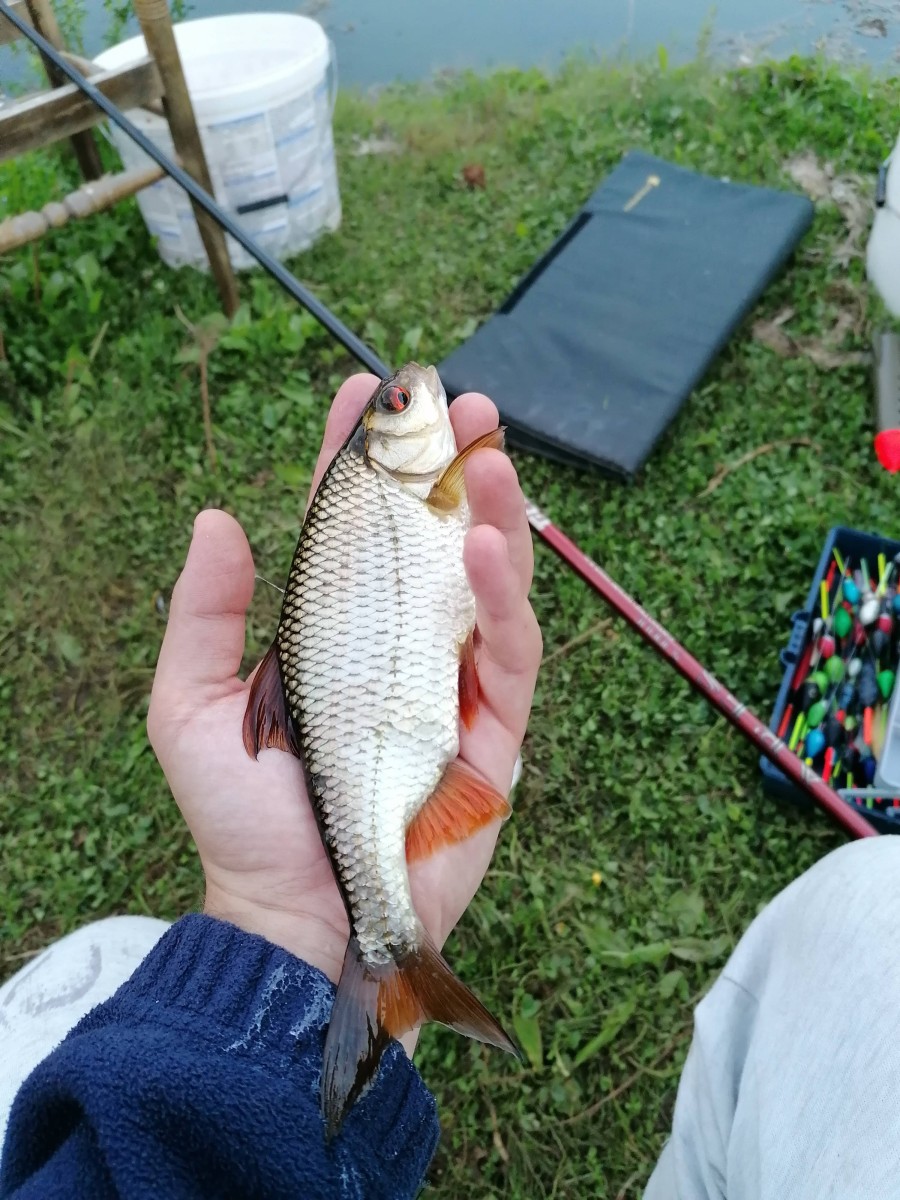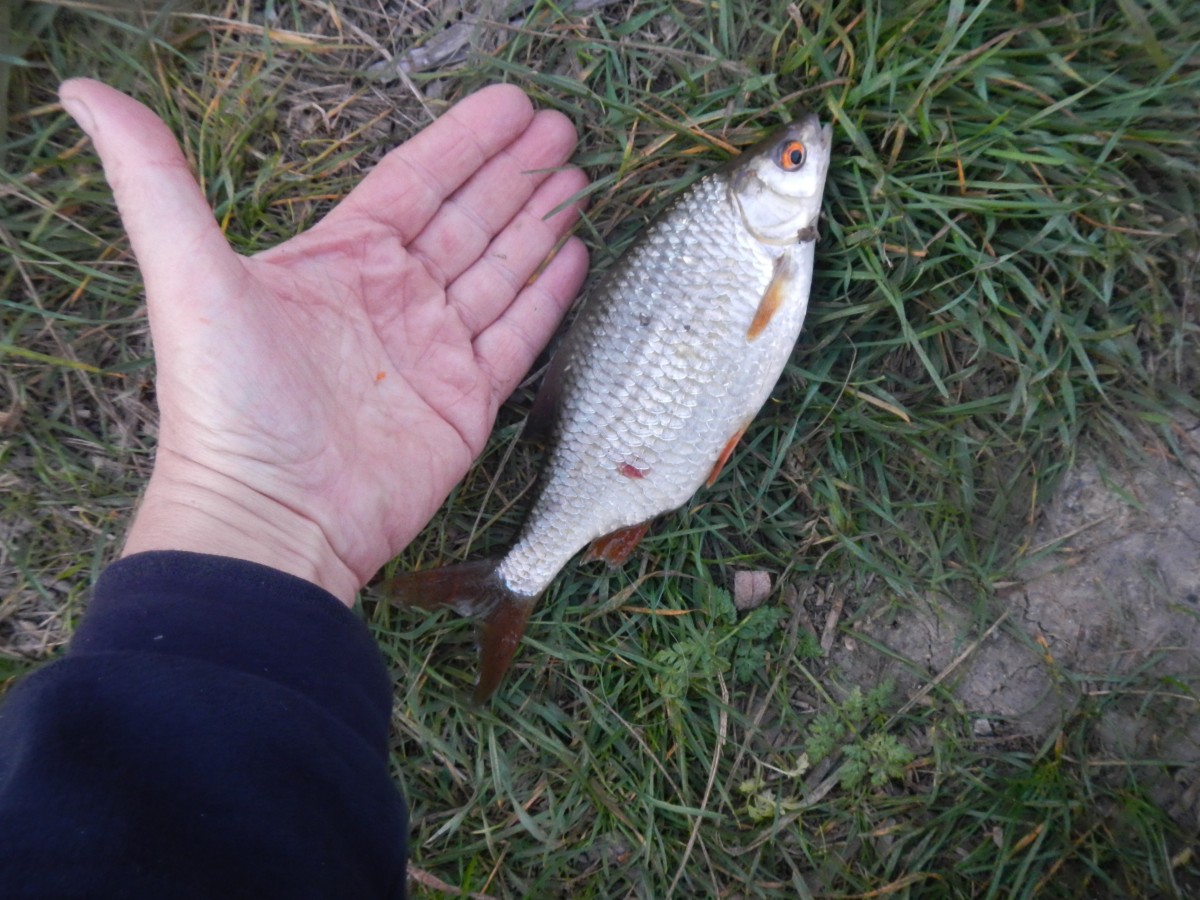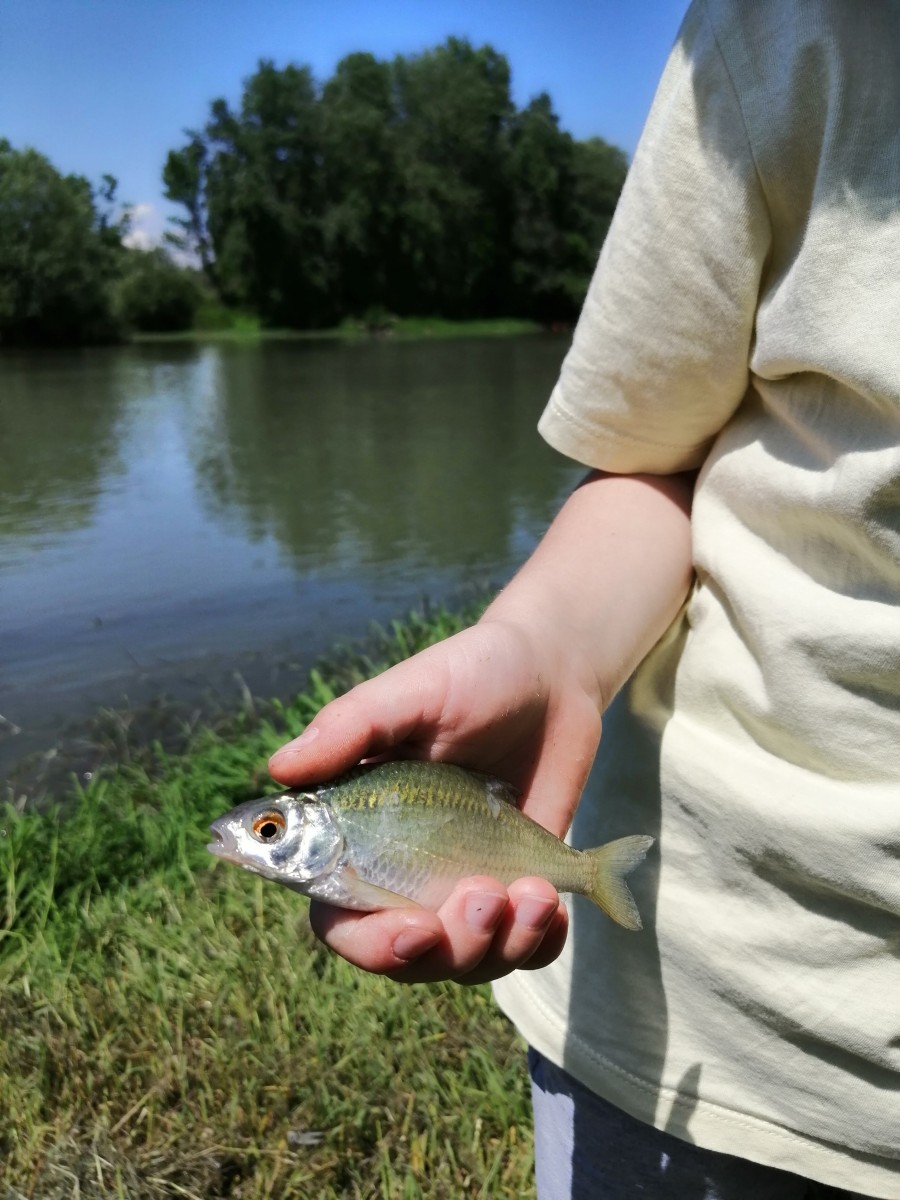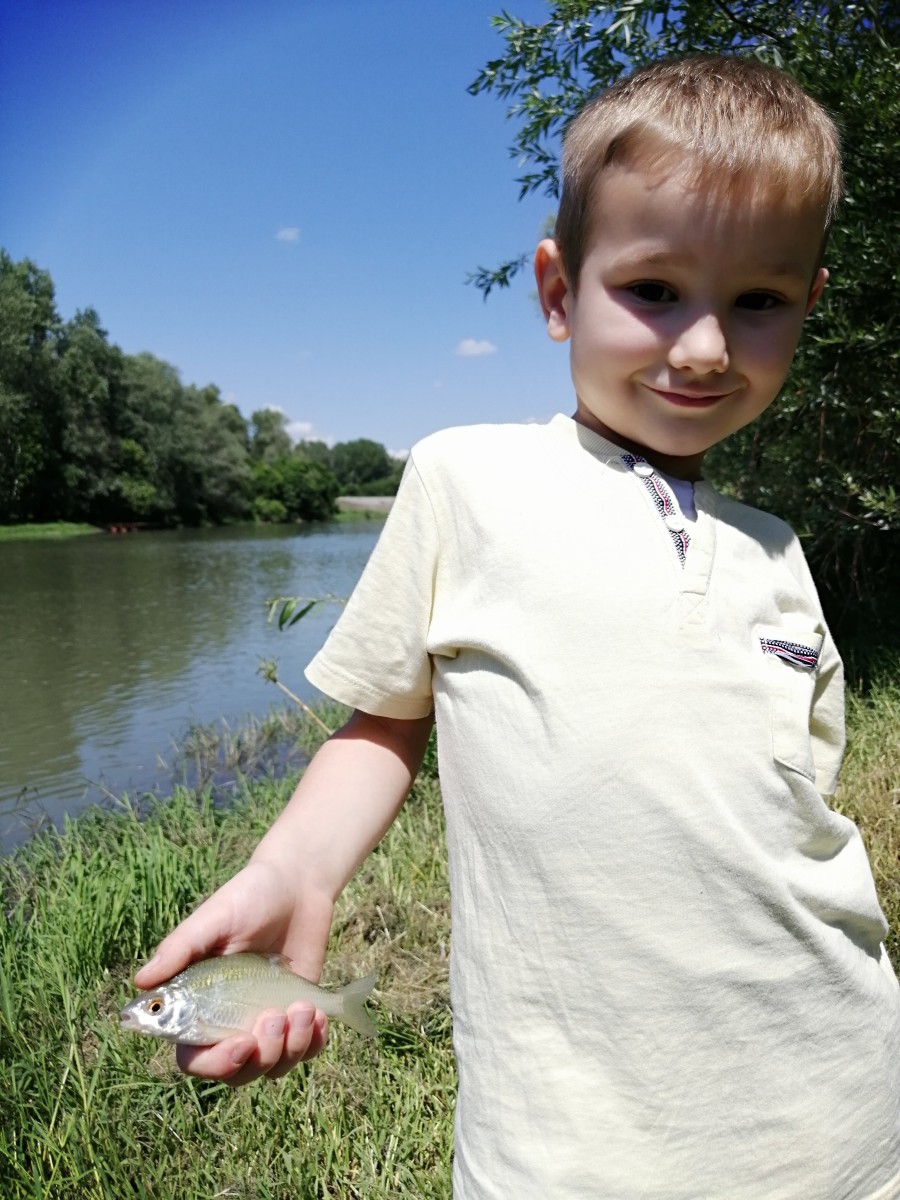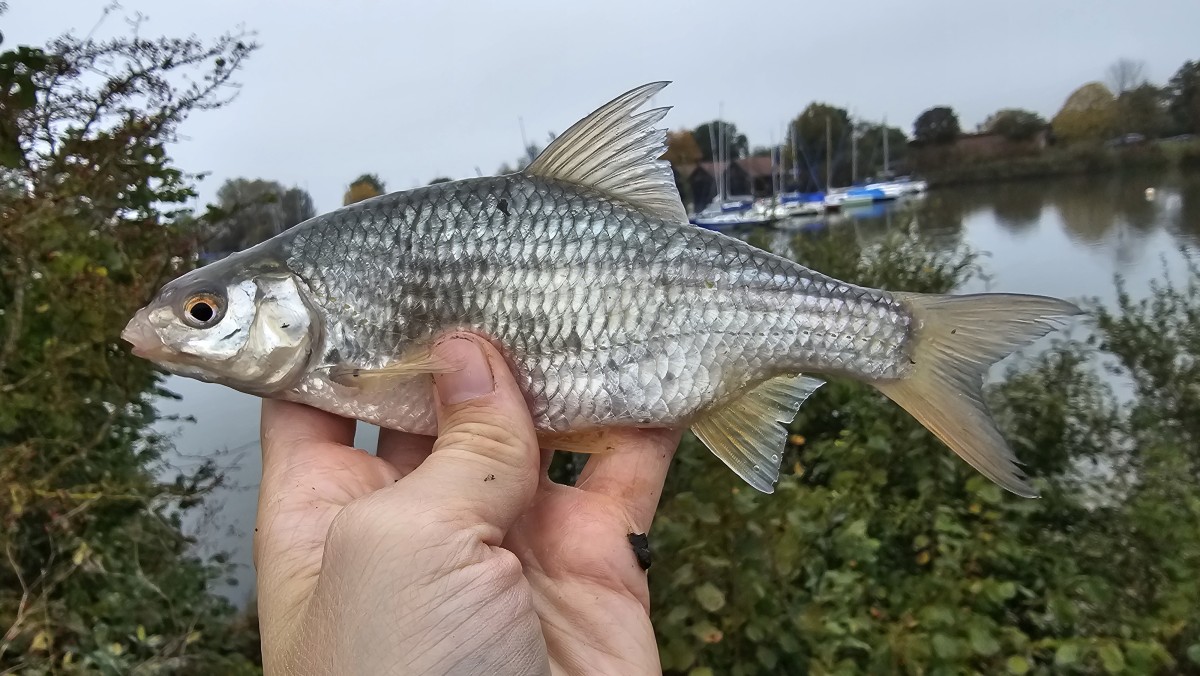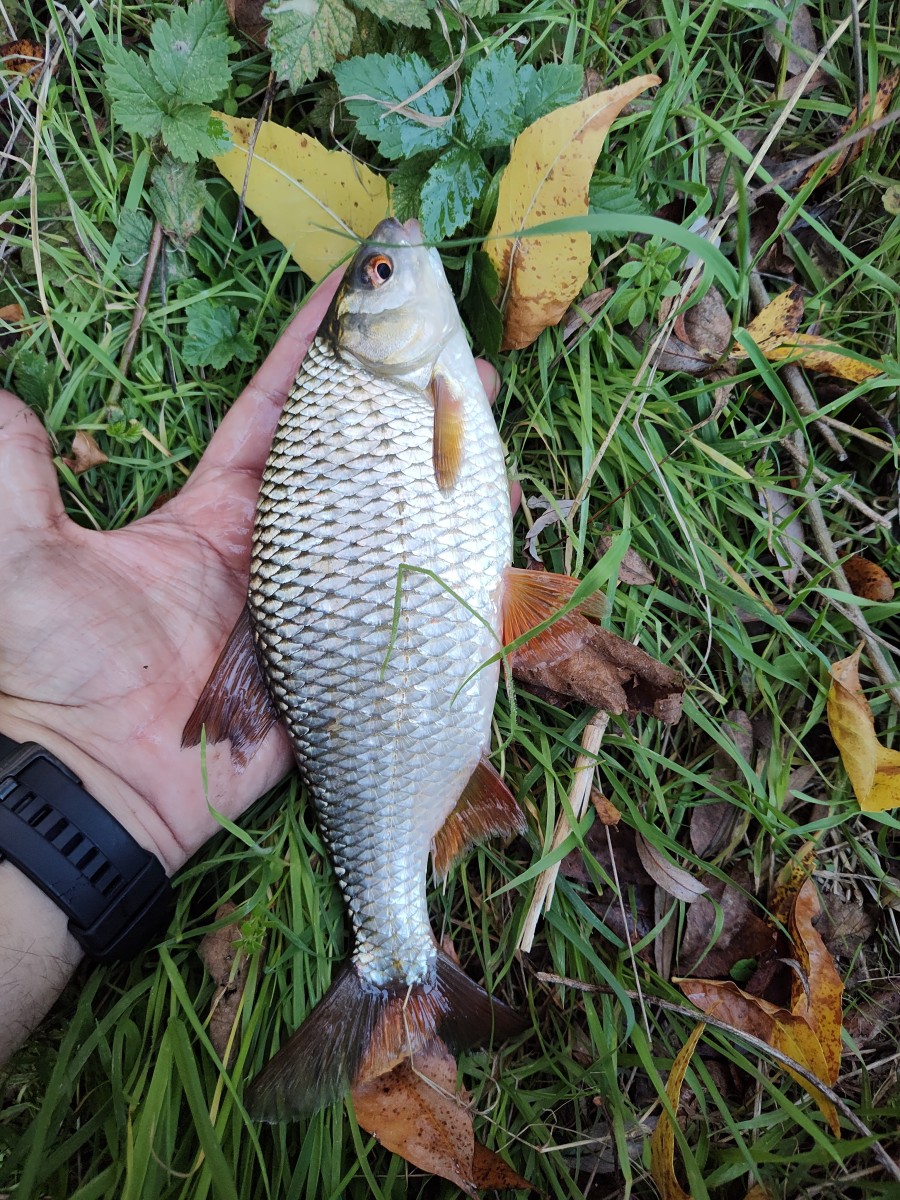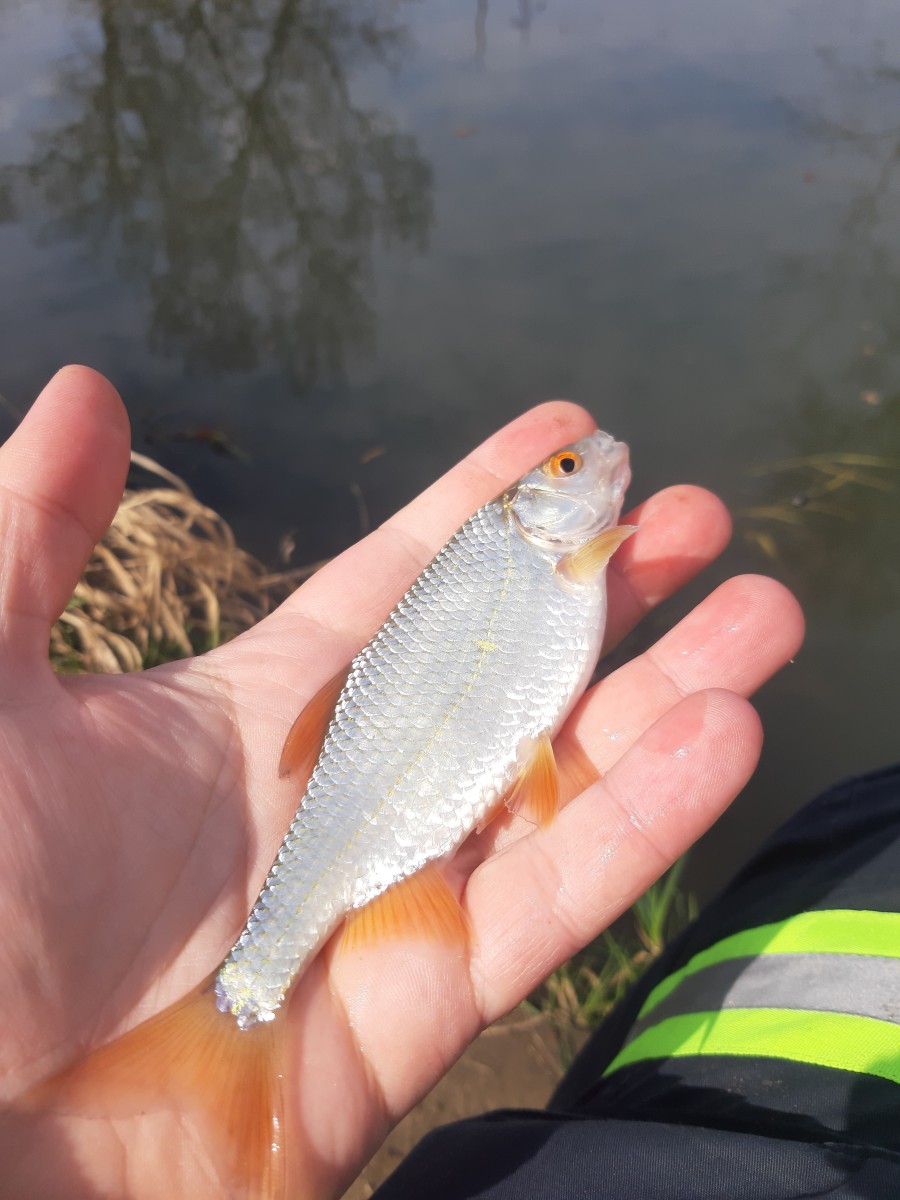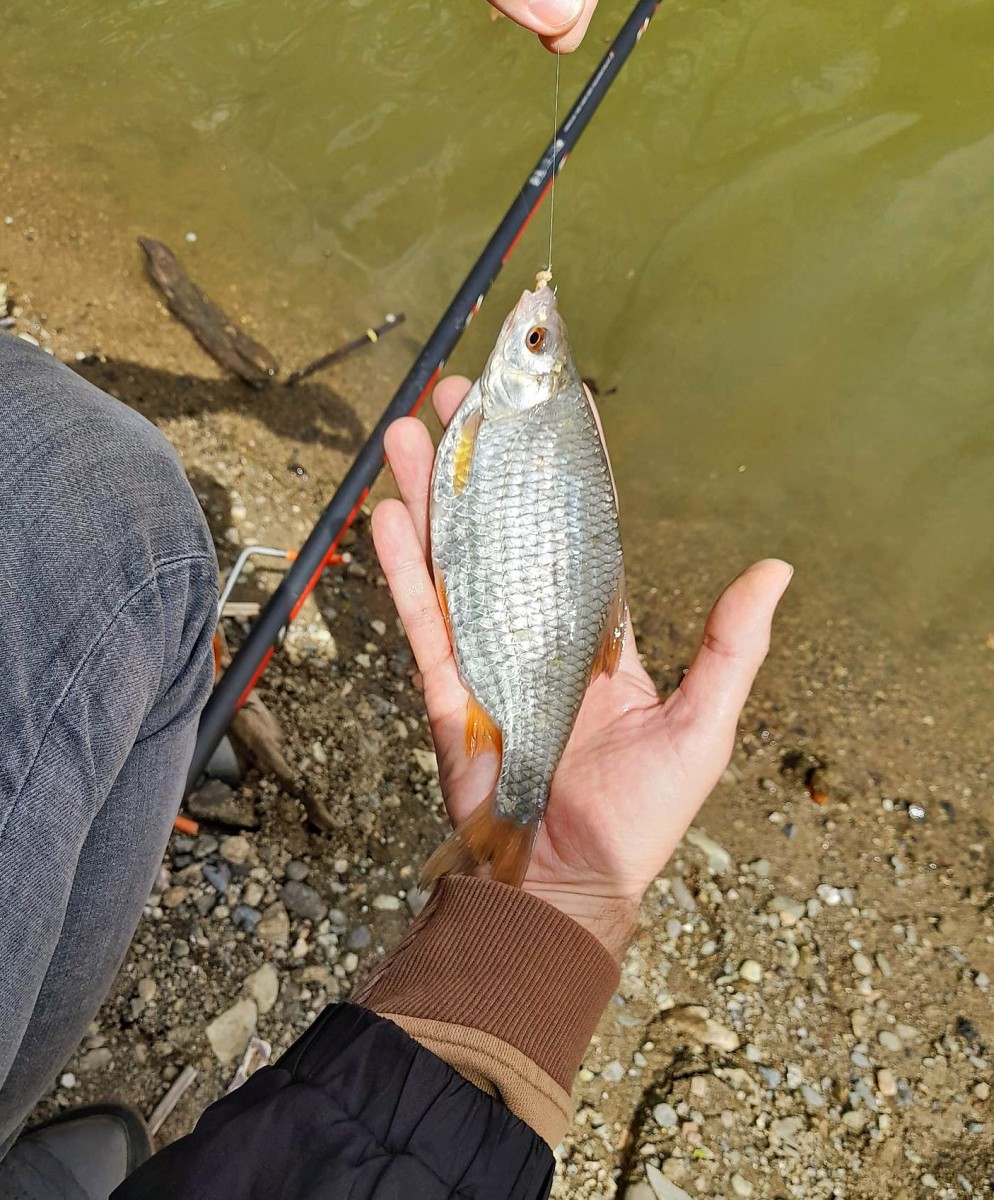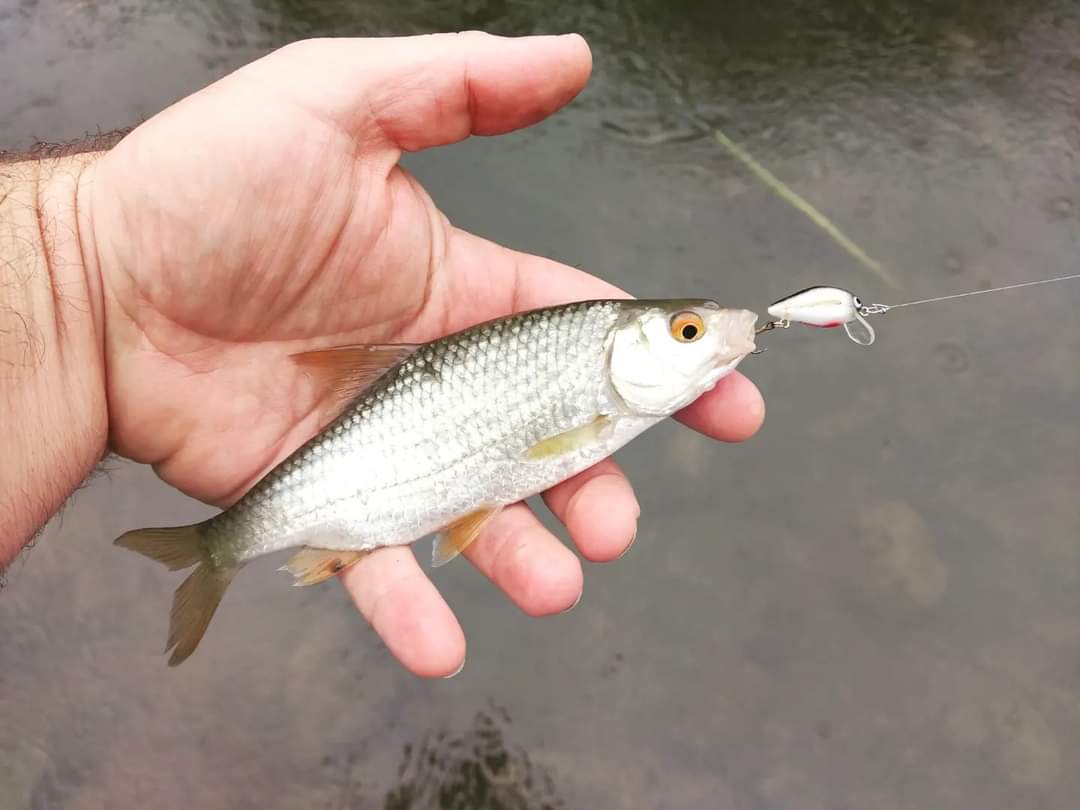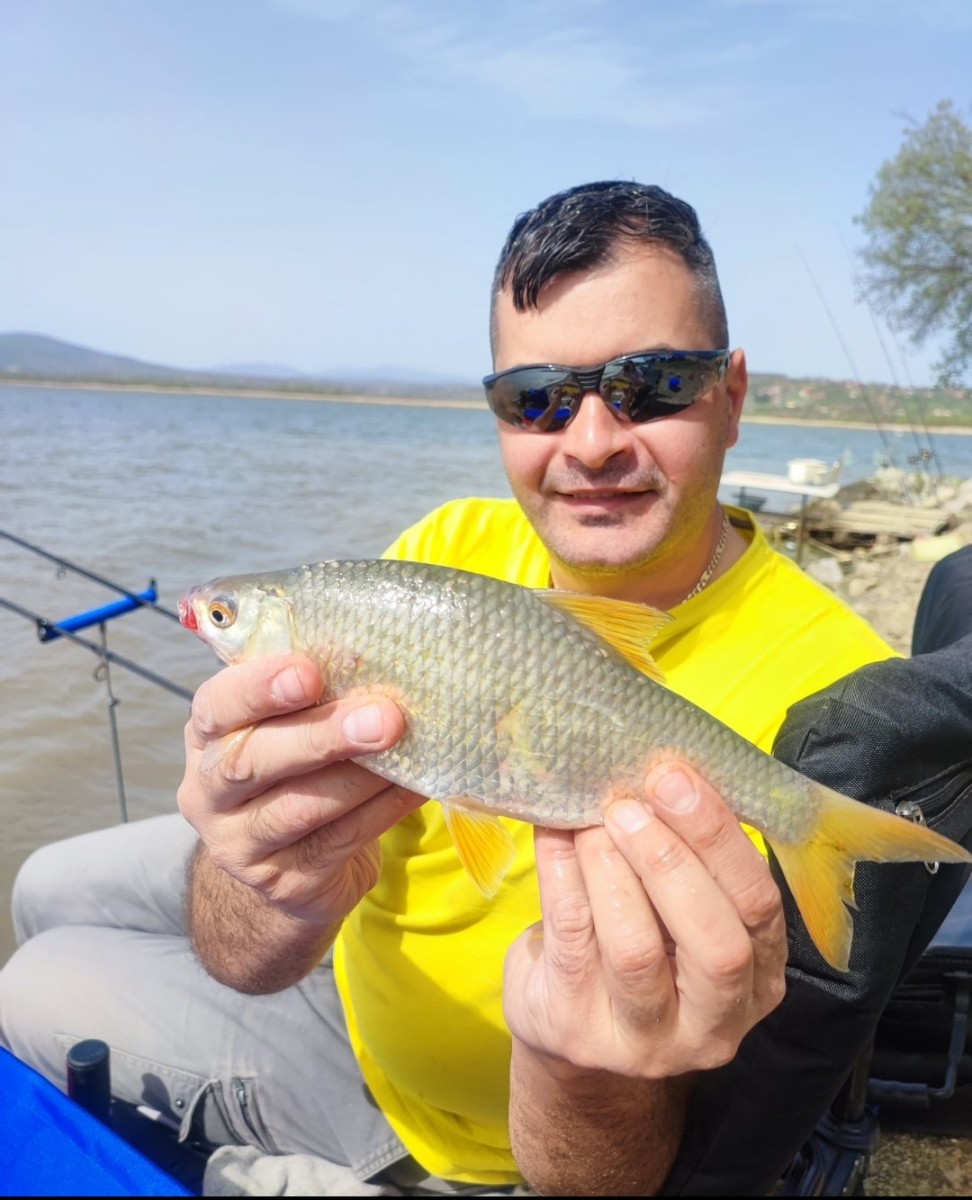Roach
(Rutilus rutilus)
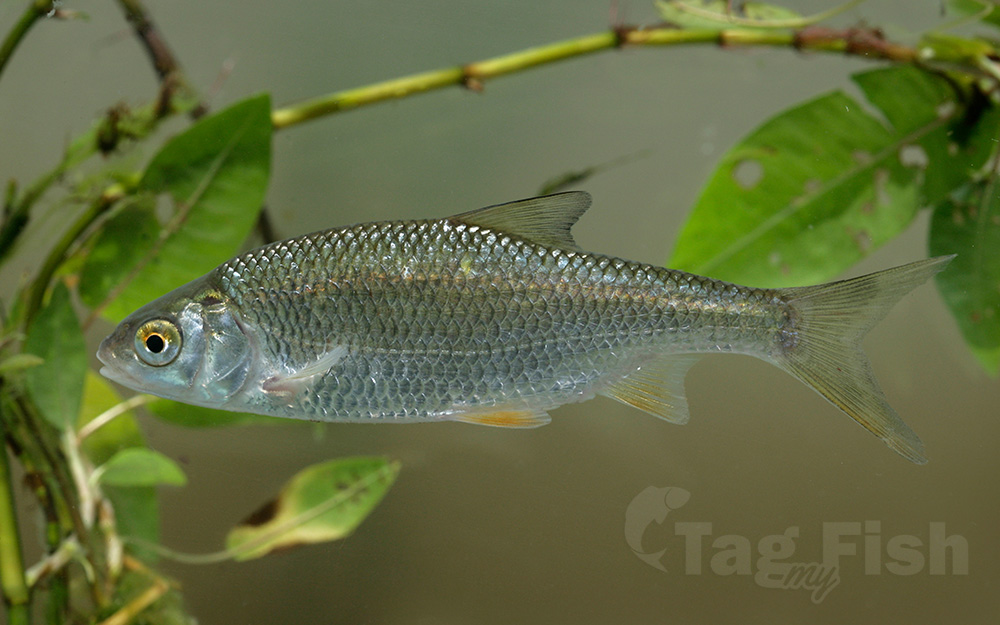
Classification
General data
The roach, or rutilus roach (Rutilus rutilus), also known as the common roach, is a fresh- and brackish-water fish of the family Cyprinidae, native to most of Europe and western Asia. Fish called roach can be any species of the genera Rutilus and Hesperoleucus, depending on locality. The plural of the term is also roach.
The roach is a small fish, often reaching no more than about 35 centimetres (14 in); maximum length is 50 cm (20 in). Its body has a bluish-silvery colour and becomes white at the belly. The fins are red. The number of scales along the lateral line is 39–48. The dorsal and anal fins have 12–14 rays. Young specimens have a slender build; older specimens acquire a higher and broader body shape. The roach can often be recognized by the big red spot in the iris above and beside the pupil. Colors of the eye and fins can be very pale, however, in some environments.
In Central and Northern Europe, the common roach can most easily be confused with the common rudd (Scardinius erythropthalmus), the dace (Leuciscus leuciscus), or the ide (Leuciscus idus). They can be distinguished by these characteristics:
The common rudd has a more yellow/greenish or golden colour. The backfin is placed more backwards and between the tip of the ventral scales and the first ray of the anal fin are only one or two scales. The roach has four or five scales there. The mouth of the rudd is more upturned and the head appears sharper.
The dace has a greenish body, colorless eyes and fins, and a distinct nose.
The ide has a higher number of scales along its lateral line (55–61), a rounder body, and a bigger mouth and head.
Distribution
The common roach is found throughout Europe except for the area around the Mediterranean, and its distribution reaches eastward into Siberia. Eastern Europe and Asia have several subspecies, some with an oceangoing life cycle living around the Caspian and Black Seas.[4] Around the Mediterranean and in northwestern parts of Spain and Portugal, several closely related species occur with no overlap in their distribution.
It was introduced in Australia in the Murray River and coastal drainages of southern New South Wales and Victoria from Europe during the 1860s and 1880s for sport purposes.
